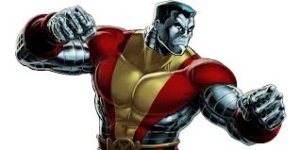For a generation, a simple black and white checkerboard logo was a portal to worlds of boundless imagination, quirky characters, and laughter that echoed through living rooms. Cartoon Network, more than just a television channel, was a cultural phenomenon, a vibrant cornerstone of childhood memories for millions across the globe, including in India. Its perceived transformation or the end of an era, as many feel it to be, signifies more than just a programming change; it marks the closing chapter on a unique period in animation history and a poignant moment for those who grew up glued to its captivating offerings.
From the early days of showcasing classic Hanna-Barbera reruns to pioneering original programming that pushed the boundaries of children's television, Cartoon Network cultivated a distinct identity. It was a haven for creativity, fostering a classic Cartoon Network era defined by its creator-driven approach. Shows were not just animated segments; they were expressions of unique artistic visions, brimming with personality, wit, and often, unexpected depth. This philosophy gave birth to some of the best cartoons that resonated with audiences of all ages, leaving an indelible mark on the cultural landscape.
Behind the Laughter: Tales from the Network
The magic of Cartoon Network shows wasn't accidental; it was the result of passion and a commitment to storytelling. Consider the genesis of "Dexter's Laboratory," a show about a boy genius and his meddling sister. Genndy Tartakovsky, its creator, started it as a student film, and its unique visual style and rapid-fire humor caught the network's eye, proving their willingness to take chances on fresh talent. Similarly, "The Powerpuff Girls," with its blend of adorable superheroes and surprisingly mature themes, was conceived by Craig McCracken during his time at CalArts. These weren't pitches manufactured in a boardroom; they were ideas born from genuine creative sparks, nurtured by a network that understood the value of distinct voices. This dedication to creator-driven content became a hallmark, attracting animators eager to tell their stories, shaping the look and feel of animation for years to come and solidifying Cartoon Network's place in animation history.The Shifting Landscape and Lingering Nostalgia
However, the media landscape is ever-evolving. The rise of streaming services fundamentally altered how content is consumed, leading to what many term the "streaming wars." Audiences migrated to on-demand platforms, challenging the traditional television model that channels like Cartoon Network thrived on. Corporate restructuring, particularly under entities like Warner Bros Discovery, has also led to shifts in programming strategy, mergers, and unfortunately, layoffs, contributing to the feeling that the original spirit and independent creative hub of the network have diminished. This transformation, while perhaps economically driven, feels like a loss to the viewers who formed deep connections with the channel during its prime.The emotional weight of the "end" of this era stems from more than just the disappearance of shows (many of which are now available elsewhere). It's about the fading of a shared experience. Gathering around the television after school or on Saturday mornings, the anticipation of new episodes, the iconic bumps and idents that were mini-masterpieces themselves – these were communal rituals. Cartoon Network childhood memories are tied to a specific time and place, a simpler age before endless streaming options. The feeling is one of nostalgia, a gentle melancholy for the passage of time and the closing of a beloved chapter in one's personal history.
While the name "Cartoon Network" may continue in some form, and its iconic characters live on through various platforms, the era of its distinct cultural dominance and pioneering creative energy feels like a cherished memory. The future of Cartoon Network may lie intertwined with larger corporate strategies and digital platforms. Yet, the legacy of classic Cartoon Network, the spirit of innovation, and the sheer joy it brought to a generation will undoubtedly endure, living on in the hearts and minds of those who accepted its vibrant echoes into their lives. The end of an era is here, but the laughter, the lessons, and the adventures remain, etched in the annals of childhood memories.

